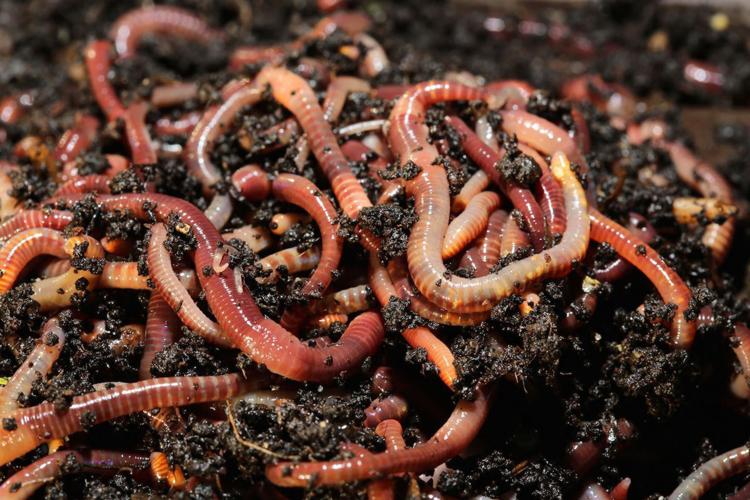What is Worm Composting?
Did you know that around 30-40% of all food produced in the U.S. ends up in landfills? That’s a significant amount, especially since all of that could be used for vermicomposting, the process of decomposing food and yard waste into nutritious soil using a magnificent creature, worms. This process also involves other vital microbes and microorganisms. The result of worm composting is a substance called worm castings. This can improve drainage, nutrition, and protection of your soil.
The Benefits of Vermicomposting
About 30% of the materials in landfills are made up of yard waste and food waste, which can both be composted into nutritious soil. Vermicomposting is a sustainable, effective, and sometimes fun way of reducing food waste. Worm composting often needs less space than traditional composting and they are often faster as well.
How to Start Vermicomposting Today
Vermicomposting can be a fun and exciting journey, but it is important to keep in mind that mistakes and errors can happen.
Building Your Bin
To begin, you would have to choose a container. I would suggest a normal storage box that has a lid on top. You will have to drill holes in the box or ventilation. To reach the right environment, you will also have to add greens and browns in a 1:2 ratio. Greens are food scraps and brown is bedding. Please do not feed your worms any meat, dairy, spicy foods (chili, onions, garlic), overly processed foods, oily foods, pasta, bread, or overly acidic foods. Bedding materials I would recommend are coconut coir, shredded cardboard, and shredded paper. Please note that worms eat their bedding, so every time you feed them, incorporate the 1:2 ratio as well!
Choosing the Right Worms
When you finish creating the vermicompost bin, it’s time to buy your worms. I suggest buying about 200 worms per square foot of surface area in your bin. In the United States, there are four main types of worms composters use. They are the Red Wigglers (Eisenia fetida), African Nightcrawlers (Eudrilus eugeniae), Indian Blues (Perionyx excavatus), and European Nightcrawlers (Eisenia hortensis).
Red Wigglers
Red Wigglers are the best for beginners. They have a yellowish tail and banding along its body. They can tolerate a wide range of temperatures (55-95°F) and are often the cheapest ($30-35 per pound). They are also the most readily available in the United States. There are usually 800-1000 worms per pound.
African Nightcrawlers
Next are African Nightcrawlers. They are very large and compost in deeper soils than the other worms. Their worm casting is very granular but they cannot tolerate the cold. They may start to die out in temperatures as low as 60°F. They are around 35 dollars a pound and there are about 300-400 worms in a pound.
Indian Blues
Indian Blues are often sold as and confused with Red Wigglers. They are very similar to red wigglers but prefer a warmer climate. The one downside of Indian Blues is that when there is an approaching thunderstorm, they may attempt a mass “jailbreak” and escape your bin.
European Nightcrawlers
The last worm is the European Nightcrawlers. They are often dubbed as the “big cousin” of Red Wigglers. They are very large and are often used as fishing bait. They are rather expensive ($35-40 per pound), and they prefer cooler temperatures than Red Wigglers.
How to Take Care of Your Vermicomposter
During the first few days of setting up your vermicomposting bin, make sure you shine a light on top of the bin continuously to prevent the worms from escaping. Keep the bedding about as moist as a wrung-out sponge and loosen the bedding once in a while to ensure the entry of oxygen. To encourage maximum worm casting production, try to feed your worms once or twice a week. Shining a light on them while you feed helps keep them from escaping too. To harvest the vermicompost, simply remove the top layer of feed, and gently separate worms from the worm castings. You can also use a sifter to automate this process.
Related Articles:
- https://unclejimswormfarm.com/vermicomposting-for-beginners/
- https://rodaleinstitute.org/science/articles/vermicomposting-for-beginners/
- https://www.epicgardening.com/composting-worms-types/
- https://foodprint.org/eating-sustainably/composting-and-food-waste/vermicomposting-101/
- https://urbanwormcompany.com/category/vermicomposting-101-series/
- https://www.planetnatural.com/worm-composting/
- https://www.ccfpd.org/Portals/0/Assets/PDF/Vermicomposting_101.pdf
Take Action:






